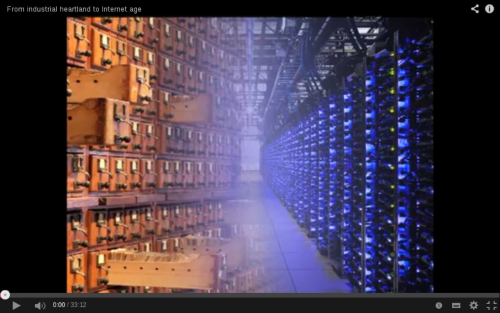Difference between revisions of "Not dissimilar"
From Mondothèque
| Line 1: | Line 1: | ||
| + | <div class="intro">Tracing back the posthumous invention of the internet</div> | ||
| + | |||
| + | == 2015 == | ||
| + | |||
== 2014 == | == 2014 == | ||
| + | |||
| + | [[File:Screenshot from 2014-10-31 16-21-52.png|thumbnail|500px|From industrial heartland to the Internet age (screen-capture). Video published by The Mundaneum, 2014]] | ||
* L'homme qui a presque inventé le cyberespace : Paul Otlet <ref>http://expositions.mundaneum.org/fr/conferences/lhomme-qui-presque-invente-le-cyberespace-paul-otlet</ref> | * L'homme qui a presque inventé le cyberespace : Paul Otlet <ref>http://expositions.mundaneum.org/fr/conferences/lhomme-qui-presque-invente-le-cyberespace-paul-otlet</ref> | ||
| − | * | + | * Le père (belge) de l’idée du web <ref>http://expositions.mundaneum.org/fr/conferences/lhomme-qui-presque-invente-le-cyberespace-paul-otlet</ref> |
== 2013 == | == 2013 == | ||
Revision as of 08:50, 5 June 2015
Tracing back the posthumous invention of the internet
2015
2014
2013
- The unsung heroes of the Internet [3]
2012
2011
Our view is that the creative ways in which he [Paul Otlet] faces tensions of scalability, representation, and perception of relationships between knowledge objects might be of interest today.[4]
2010
He also wrote extensively about the need for a universal network for the communication of knowledge. His theoretical approach to the organi-zation and dissemination of information was far ahead of its time, notably in foreshadowing the Internet, Hypertext, and the World Wide Web.[5]
2009
2008
Building Society, Constructing Knowledge, Weaving the Web: Otlet’s Visualizations of a Global Information Society and His Concept of a Universal Civilization[6]- ↑ http://expositions.mundaneum.org/fr/conferences/lhomme-qui-presque-invente-le-cyberespace-paul-otlet
- ↑ http://expositions.mundaneum.org/fr/conferences/lhomme-qui-presque-invente-le-cyberespace-paul-otlet
- ↑ http://expositions.mundaneum.org/fr/conferences/linventeur-de-linternet-vinton-cerf-en-conference
- ↑ Charles van den Heuvel, W. Boyd Rayward, Facing Interfaces: Paul Otlet's Visualizations of Data Integration. Journal of the American society for information science and technology (2011)
- ↑ Rayward, Warden Boyd (who translated and adapted), Mundaneum: Archives of Knowledge, Urbana-Campaign, Ill. : Graduate School of Library and Information Science, University of Illinois at Urbana-Champaign, 2010. Original: Charlotte Dubray et al., Mundaneum: Les Archives de la Connaissance, Bruxelles: Les Impressions Nouvelles, 2008.
- ↑ Van den Heuvel, C. Building society, constructing knowledge, weaving the web. Otlet’s visualizations of a global information society and his concept of a universal civilization. In W.B. Rayward (Ed.), (2008) European Modernism and the Information Society (pp. 127–153). London: Ashgate.
